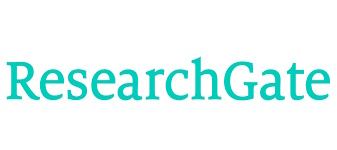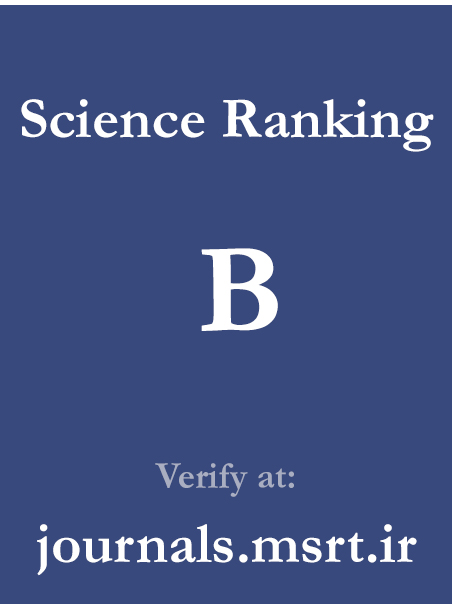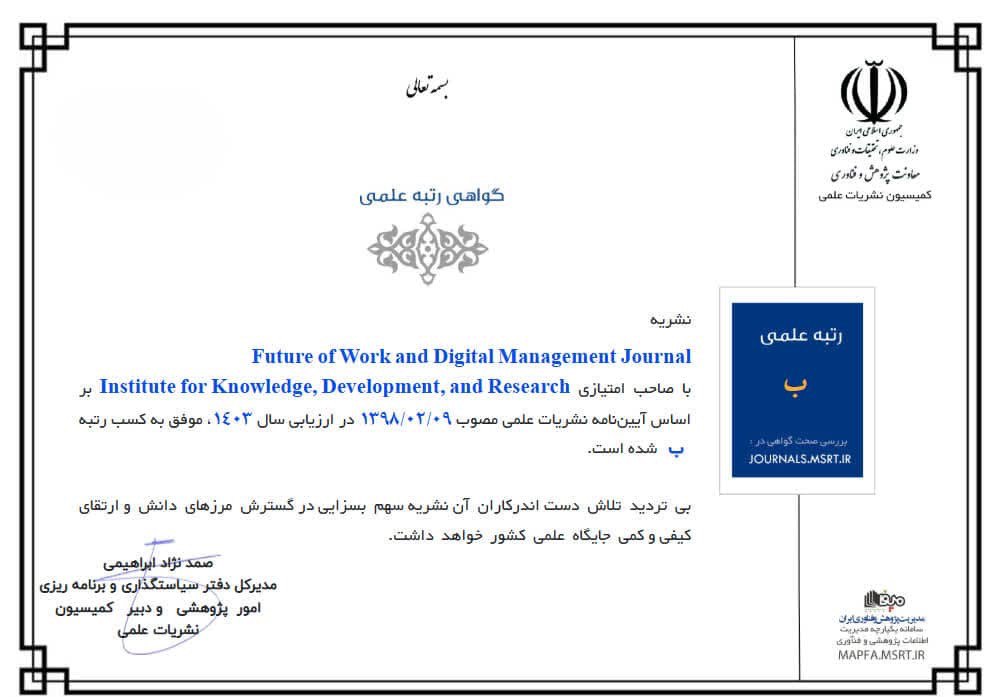Perceived AI Fairness and Organizational Commitment: The Mediating Role of Psychological Safety
Keywords:
Perceived AI Fairness, Psychological Safety, Organizational CommitmentAbstract
This study aimed to investigate the relationship between perceived AI fairness and organizational commitment, with psychological safety examined as a potential mediating variable. A descriptive correlational design was employed using a sample of 443 employees from public and private sector organizations in Indonesia. The sample size was determined using the Morgan and Krejcie table for large populations. Standardized instruments were used to measure organizational commitment (Organizational Commitment Questionnaire by Mowday et al., 1979), psychological safety (Psychological Safety Scale by Edmondson, 1999), and perceived AI fairness (Perceived Fairness in Algorithmic Decision-Making Scale by Lee, 2018). Data were analyzed using SPSS-27 for descriptive and Pearson correlation statistics, and AMOS-21 for structural equation modeling (SEM). Model fit was assessed using established indices including χ²/df, CFI, TLI, GFI, AGFI, and RMSEA. Perceived AI fairness was significantly and positively correlated with organizational commitment (r = .39, p < .001) and psychological safety (r = .51, p < .001). Psychological safety was also positively correlated with organizational commitment (r = .47, p < .001). SEM results confirmed good model fit (χ²/df = 2.47, CFI = 0.96, RMSEA = 0.057) and demonstrated that perceived AI fairness significantly predicted psychological safety (β = 0.51, p < .001), which in turn predicted organizational commitment (β = 0.39, p < .001). The indirect effect of AI fairness on commitment through psychological safety was also significant (β = 0.20, p < .001), indicating partial mediation. The findings suggest that perceived fairness in AI systems contributes to higher organizational commitment, both directly and through enhanced psychological safety. Organizations should consider both technological transparency and supportive interpersonal environments to foster employee trust and engagement in AI-integrated workplaces.
Downloads
References
[1] J. Li and M. Chignell, "FMEA-AI: AI Fairness Impact Assessment Using Failure Mode and Effects Analysis," Ai and Ethics, vol. 2, no. 4, pp. 837-850, 2022, doi: 10.1007/s43681-022-00145-9.
[2] S. Verma, P. Pali, M. Dhanwani, and S. Jagwani, "Ethical AI: Developing Frameworks for Responsible Deployment in Autonomous Systems," Ijmrset, vol. 6, no. 04, pp. 1-14, 2023, doi: 10.15680/ijmrset.2023.0604036.
[3] Y. J. Ho, W. Jabr, and Y. Zhang, "Ai Enforcement: Examining the Impact of Ai on Judicial Fairness and Public Safety," SSRN Electronic Journal, 2023, doi: 10.2139/ssrn.4533047.
[4] M. B. Ünver and O. Asan, "Role of Trust in AI-Driven Healthcare Systems: Discussion From the Perspective of Patient Safety," Proceedings of the International Symposium on Human Factors and Ergonomics in Health Care, vol. 11, no. 1, pp. 129-134, 2022, doi: 10.1177/2327857922111026.
[5] T. Nguyen, J. Xu, A. Roy, H. Daumé, and M. Carpuat, "Towards Conceptualization of “Fair Explanation”: Disparate Impacts of Anti-Asian Hate Speech Explanations on Content Moderators," 2023, doi: 10.18653/v1/2023.emnlp-main.602.
[6] H. Yadav, H. Sinha, A. Manhar, and A. Patle, "Ethical Integration of Artificial Intelligence in Criminology: Addressing Challenges for a Safer Society," International Research Journal of Modernization in Engineering Technology and Science, 2023, doi: 10.56726/irjmets41779.
[7] Y.-E. Sung, "Criminal Psychology and Artificial Intelligence (AI): Risk Factors and Implications," Korea Assoc Crim Psychol, vol. 20, no. 4, pp. 105-130, 2024, doi: 10.25277/kcpr.2024.20.4.105.
[8] Y. Chen, "Pandoras Pixel Box: The Rise of AI Art and the Ethical Dilemma of Creativity," Lecture Notes in Education Psychology and Public Media, vol. 28, no. 1, pp. 135-143, 2023, doi: 10.54254/2753-7048/28/20231315.
[9] S. O. Atiku, F. A. Soneye, and R. Anane-Simon, "Fostering Psychological Safety for Team Effectiveness in Family Businesses," pp. 84-121, 2023, doi: 10.4018/978-1-6684-8748-8.ch004.
[10] A. Zeglin, M. L. McCarthy, S. Nedorost, M. Dell, and L. Logio, "Psychological Distress in the Era of Psychological Safety," Journal of General Internal Medicine, vol. 40, no. 1, pp. 38-40, 2024, doi: 10.1007/s11606-024-08893-6.
[11] Y. Zhang and M. Wan, "The Double-Edged Sword Effect of Psychological Safety Climate: A Theoretical Framework," Team Performance Management, vol. 27, no. 5/6, pp. 377-390, 2021, doi: 10.1108/tpm-01-2021-0005.
[12] I. Goller and J. Bessant, "Practising Psychological Safety," pp. 133-146, 2023, doi: 10.4324/9781003226178-10.
[13] N. Jamal, V. N. Young, J. Shapiro, M. Brenner, and C. E. Schmalbach, "Patient Safety/Quality Improvement Primer, Part IV: Psychological Safety—Drivers to Outcomes and Well‐being," Otolaryngology, vol. 168, no. 4, pp. 881-888, 2022, doi: 10.1177/01945998221126966.
[14] L. Kang, "Describing the Impact of Psychological Safety on Risk Prevention: A Threshold Model Construction," Work, vol. 79, no. 1, pp. 277-288, 2024, doi: 10.3233/wor-230234.
[15] D. F. Hunt, J. Bailey, B. Lennox, M. Crofts, and C. Vincent, "Enhancing Psychological Safety in Mental Health Services," International Journal of Mental Health Systems, vol. 15, no. 1, 2021, doi: 10.1186/s13033-021-00439-1.
[16] K. A. Porter‐Stransky, K. J. Horneffer, L. Bauler, K. Gibson, C. M. Haymaker, and M. Rothney, "Improving Departmental Psychological Safety Through a Medical School-Wide Initiative," BMC Medical Education, vol. 24, no. 1, 2024, doi: 10.1186/s12909-024-05794-4.
[17] V. M. Ganuzin and E. Kovaleva, "Development of Pedagogical Competencies in Creating a Psychologically Safe Educational Environment," pp. 164-168, 2024, doi: 10.46727/c.v1.21-22-03-2024.p164-168.
[18] S. Sanduleac, "Psychological Security Versus Psychological Safety," Moldoscopie, no. 2(97), pp. 100-106, 2023, doi: 10.52388/1812-2566.2022.2(97).09.
[19] T. L. Khudyakova, Y. V. Klepach, and М. R. Arpentieva, "Components and Criteria for the Psychological Safety of Education," Society and Security Insights, vol. 5, no. 4, pp. 155-170, 2023, doi: 10.14258/ssi(2022)4-09.
[20] A. C. Loignon and S. V. Wormington, "Psychologically Safe for Some, but Not All? The Downsides of Assuming Shared Psychological Safety Among Senior Leadership Teams," 2022, doi: 10.35613/ccl.2022.2048.
[21] J. E. Swain, K. Conkey, Y. Kalkstein, and O. Strauchler, "Exploring the Utility of Psychological Safety in the Armed Forces," Journal of Character and Leadership Development, vol. 11, no. 2, pp. 55-67, 2024, doi: 10.58315/jcld.v11.288.
[22] B. Fyhn, H. Bang, T. E. Sverdrup, and V. Schei, "Safe Among the Unsafe: Psychological Safety Climate Strength Matters for Team Performance," Small Group Research, vol. 54, no. 4, pp. 439-473, 2022, doi: 10.1177/10464964221121273.
[23] K. S. Vogt, J. Baker, M. Morys‐Edge, S. Kendal, E. Mizen, and J. Johnson, "‘I Think the First Priority Is Physically Safe First, Before You Can Actually Get Psychologically Safe’: Staff Perspectives on Psychological Safety in Inpatient Mental Health Settings," Journal of Psychiatric and Mental Health Nursing, vol. 32, no. 2, pp. 276-287, 2024, doi: 10.1111/jpm.13101.
[24] Y. V. Smyk and A. Y. Kachimskaya, "Teacher’s Capacity for Psychological Safety as a Condition for Schoolchildren’s Psychological Safety," Science for Education Today, vol. 11, no. 1, pp. 42-58, 2021, doi: 10.15293/2658-6762.2101.03.
Downloads
Published
Submitted
Revised
Accepted
Issue
Section
License

This work is licensed under a Creative Commons Attribution-NonCommercial 4.0 International License.








